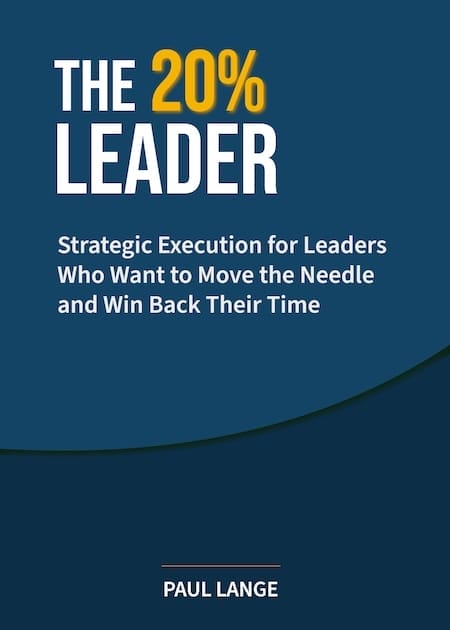In This Article
Forget the myth basement-built SaaS with the heroic garage coder birthing the next empire. The Bill Gates story conditioned generations and it was an absolute crock of shit. He was born with a silver spoon in his mouth and never programmed anything other than perhaps a VCR when he was young and more recently the global population with his jab poison and online manipulation.
Most code-first darlings aren’t built on operational discipline; they’re stitched together at 2 a.m., shipped at 2:05, and marketed at 2:06. The headline metric isn’t value created—it’s exit-bait. Investors buy the story. What they inherit is risk.
Here’s the truth:
An MVP isn’t a business, a lifetime deal isn’t a model, and (enticed, incentivised and purchased) five stars on a deals marketplace or alleged trust platforms aren’t proof of durability. Output is a function of leverage, not just volume. When the “operator” is a single developer optimising for a payday, the leverage is fake. You’re financing a time bomb wrapped in code.
The Pattern You Keep Funding
Key-person risk in disguise
When one or two developers are the product, you’re running at a bus factor of one. If that person burns out, cashes out, or bails, the roadmap dies with their Git history. That isn’t edgy; it’s negligent capital stewardship. The bus-factor concept exists for a reason: single-point-of-failure teams stall or collapse when key knowledge isn’t shared.
The lifetime-deal cash grab
Lifetime deals (the darlings of deal marketplaces) front-load cash and back-load obligations. Most offer easy refunds in the first 30–60 days; after that, the vendor carries “forever” liabilities—support, infra, compliance—on a one-time fee. That’s not recurring revenue; it’s a promise that accrues technical and service debt with every new user. It looks like traction, but it’s often negative-margin growth waiting to implode.

Worse, the vendor often sees only a fraction of the headline price—especially on marketplace-driven LTDs where commissions gut the margin. That makes it a burn cycle, not a growth loop. Many founders discount beyond reason, deliver below expectation, and burn bridges that later scare off strategic buyers. These platforms are also being used to artificially balloon user counts—fattening the cap table optics for M&A or fundraising, without actual economic durability. If the founder lacks integrity, the whole cap table ends up infected.
False signals of product-market fit
A spike from a marketplace campaign is not PMF. It’s a price-sensitive cohort subsidised by your capital and the founder’s marketing copy. If those users don’t convert to sustainable ARR, you’ve bought a graph, not a business.
SaaS sprawl and Shadow IT amplification
Inside your portfolio companies, teams are already drowning in overlapping tools and unowned spend. That risk is no longer just SaaS—it’s additionally AI sprawl. Every GPT-wrapped plugin and machine-learning widget now adds opacity, not clarity. From hallucinated output to unclear data lineage, the AI tools flooding your stack are often less tested, less accountable, and far harder to audit. They masquerade as productivity hacks but quickly become institutionalised risk. Shadow IT is driving data risk, compliance exposure, and licence waste. Injecting another brittle tool from a single-dev operation compounds that risk, not reduces it.
The failure base rate is not your friend
Take the romance out of it. Most startups fail. Whether you quote two-thirds never returning a positive outcome or the blunt “~90% fail” headline, the base rate is brutal. Your only defence is due diligence on leadership, systems, and economics—not demo theatre. Especially now, in what’s fast becoming the AI echo run of the dot-com boom-bust cycle—signal is buried under hype, and capital is chasing noise.
Support and service don’t scale on heroics
There’s a chasm between “I can fix it myself” at 100 users and “we meet SLAs at 5,000”. Without process, observability, on-call rotations, and runbooks, customer love becomes customer revolt at the first real outage.
Exit addiction
Some founders aren’t building to serve; they’re building to flip. They optimise for valuation optics—vanity metrics, viral launches, accelerated feature dumps—then look for an acquirer before the support burden catches up. As an investor, you’re underwriting the tab when the music stops.
Why This Keeps Catching Even Smart Investors
Because it looks efficient: fast shipping, low headcount, high perceived velocity. Because reviews are glowing for 60 days, then silent. Because deals marketplaces add a coat of legitimacy that feels like distribution. Because every action looks “on purpose” when you only see the highlight reel. Investors fall for well-groomed dogs—but miss the fleas. That biscuit you’re about to toss might come with a side of mange.
Here’s the reframe: Leverage beats labour. If the operator isn’t optimised (discipline, governance, humility to talk to customers), the code becomes a liability, not an asset. The delta is the leverage.
The Four Invisible Liabilities You’re Buying
Technical debt as a growth limiter
Tight, undocumented code builds demos, not durable platforms. Low bus factor means slow onboarding, brittle releases, and frozen roadmaps. The hidden cost is months of catch-up engineering once real customers push real load.
Service debt that compounds faster than MRR
Lifetime users don’t disappear; they accumulate. Tickets, feature requests, and uptime expectations keep rising while cash does not. Even the deals platforms know refunds are easy early on—after that, the noise becomes your portfolio company’s cost centre.
Compliance and data-handling risk
Shadow IT and point tools open gaps: data residency, access logs, DPIAs, breach notifications. The fine isn’t the only cost; it’s the reputational damage and remediation drag on the rest of the portfolio.
Fragile economics
If growth is discounted one-offs, you’re paying to inflate cohort size without lifetime value. That’s not runway; it’s a mirage. Even advocates of lifetime deals warn sustainability hinges entirely on the operator’s ability to support “forever” with a one-time cheque.

Investor Playbook: How to Spot a Flea-Free Biscuit
Ask these non-negotiables, then verify.
- Bus factor & knowledge sharing.
Who else can ship critical fixes? Show me runbooks, code ownership maps, and an on-call rota. If it’s one person, walk. - Post-deal revenue mix.
What % of users are on lifetime vs subscription? What’s net new ARR after the campaign? Refund rate inside the 30–60-day window? - Support load per 1000 users.
Median first-response time, backlog age, weekend coverage, and churn after first outage. Charts, not opinions. - Observability & quality gates.
Do they run error budgets, SLOs, staged rollouts, and automated rollback? Or “ship and pray”? - Security & compliance.
Data map, breach history, DPA templates, audit logs, SSO/MFA. If they can’t speak plainly, they don’t have it. - Roadmap governance.
Who prioritises? Based on what signals? “Discord loudest voice” isn’t a strategy. If the roadmap is driven by noise or novelty, you’re underwriting a wine made to sell—not to age. Real product vision isn’t just fast—it’s fermented with purpose. - Unit economics by cohort.
Support minutes per ticket, infra cost per active user, gross margin after deals fees. If lifetime cohorts are underwater, the fuse is already lit. - Customer quality, not count.
Are logos concentrated in hobbyists and side-hustlers, or in paying businesses with embedded workflows? - Founder intent.
Directly: “Are you building a compounding product or optimising for an acquisition?” Watch the eyes, not the deck. - Kill-switch plan.
If the operator disappears, what’s the business continuity plan? Escrowed code? Step-in rights? External SRE on retainer?
What “Good” Looks Like (Even for a Small Dev-Led Team)
- Documented everything. Single source of truth, not tribal knowledge.
- Two in a box on critical areas (backend + infra, infra + support, etc.), so holidays and acquisitions don’t kill uptime.
- Measured service. Real SLOs, public status page, incident reviews without blame.
- Subscription-heavy revenue. LTDs, if any, are capped, ring-fenced, and modelled with support assumptions.
- Total Quality Experience (Total QX) DNA. Touchpoint Experience Design embedded from first ticket to renewal, not bolted on when the first enterprise logo arrives. That’s how you scale love into loyalty.
Leadership Matters More Than Code (Yes, Even Here)
Optimise the operator. A developer who can lead, listen, and design for humans beats a “10x coder” who ships cleverness no one can support. Precision Coaching turns talented builders into disciplined operators who can run cadences, not just commits. Total QX forces the team to think in systems—technical and relational—so service quality scales with the user base, not against it. Your money compounds when the leadership system compounds.
After 35 years advising founders and investors, I’ve seen more value destroyed by operator immaturity than by competitive pressure. Teams lose not because the code was wrong, but because the culture was. Every action is on purpose; leadership that ignores operations creates accidents that look like fate.
Why does this cycle keep repeating?
It starts with the cult of the “genius dev”—and founders who optimise for brilliance instead of business resilience.
Read next: Stop Worshipping the Genius Dev, Build a Business That Survives One
The Investor’s Cut-Through
Cut through the noise. These filters separate story from substance—use them before you write the cheque.
- Demand leverage, not lore. Show me systems, not heroic effort.
- Insist on documented resilience. Bus factor ≥ 2 on core subsystems. Escrow and step-in rights.
- Audit the economics of “forever”. Lifetime deals without lifetime margins are slow-motion liabilities.
- De-risk Shadow IT in your portfolio. Tool count down, visibility up, governance at the edge—because SaaS sprawl is already taxing your returns.
- Back builders who serve. If the founder talks more about their exit than your customers’ outcomes, you’ve already got your answer.
Every dog has its day. Some of these dev-dogs will get their biscuit. Be careful—biscuits tossed to mutts often come with fleas. Don’t fund the itch.
If this kind of no-fluff, results-first thinking hits home, you’ll want to grab a copy of The 20% Leader—packed with actionable insights for high-stakes leaders who don’t have time to waste. Available on Amazon.



[…] 👉 See what this risk looks like from the investor side—especially when the “brilliant dev” is the founder. Read this: "Programmers Chasing a Payday – The Investor Trap in Basement-Built SaaS.” […]